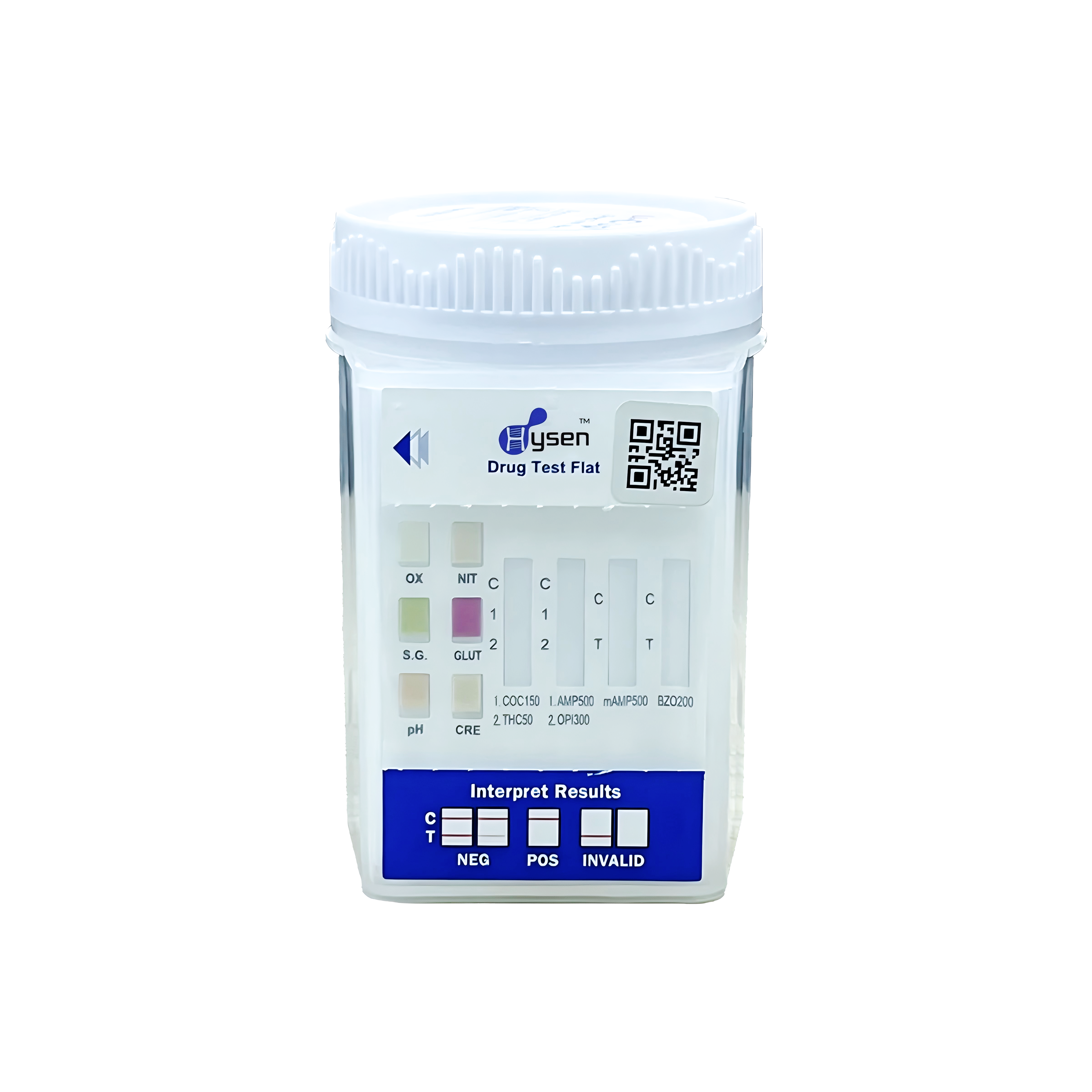Introduction to 510(k) Clearance and Non-Cleared Drug Tests
The realm of drug testing encompasses a variety of products that help determine the presence or absence of substances in the body. Consumers and health professionals alike often rely on these devices to provide accurate results. Understanding the differences between 510(k) cleared tests and non-cleared drug tests involves examining the specific standards and processes that underpin them.
Defining 510(k) Clearance
To grasp the significance of 510(k) clearance, it is essential to understand its role within the regulatory framework established by the Food and Drug Administration (FDA). The 510(k) process is a premarket submission made to the FDA to demonstrate that a device is at least as safe and effective as a legally marketed predicate device. This process allows many devices to reach the market more quickly and at a lower cost compared to the more rigorous premarket approval (PMA) process. This streamlined approach is particularly key for suppliers and manufacturers looking to wholesale and customize their product offerings efficiently.
Regulatory Framework: Understanding 510(k) Clearance
The FDA categorizes medical devices into three classes based on risk, which dictates the regulatory pathway they must undergo. Class I and II devices, typically lower-risk devices, often follow the 510(k) process, whereas Class III devices usually require PMA due to their higher risk.
Parameters of 510(k) Clearance
Understanding the nuances of the 510(k) process involves recognizing its reliance on predicate devices. These predicates serve as benchmarks to which new devices are compared for safety and effectiveness, ensuring they meet specific standards before reaching consumers.
Role of Predicate Devices
Predicate devices are crucial in 510(k) submissions. These are devices already legally marketed, which new devices must prove substantial equivalence to. This involves demonstrating that the new device maintains the same intended use and that any technological differences do not raise new safety or effectiveness concerns.
Safety and Effectiveness Standards in 510(k)
The 510(k) pathway focuses on demonstrating that a new device is substantially equivalent to an existing product regarding safety and effectiveness. It's important to note that this does not require identical performance characteristics, but rather that any differences must not pose new questions of safety or effectiveness.
Comparative Safety Assessment
Devices undergoing 510(k) clearance are judged based on scientific methods evaluating their technological characteristics and performance data. This includes clinical and non-clinical data that demonstrate safety and effectiveness, providing confidence to wholesalers and customers alike.
The Role of Predicate Devices in 510(k)
The concept of substantial equivalence is central to the 510(k) process. Devices must draw equivalence to predicates that have been previously cleared by the FDA, allowing a quicker route to market without compromising safety.
Importance of Technological Characteristics
Technological characteristics remain a focal point in the assessment process. Any differences between the new device and its predicate must be backed by evidence showing they do not introduce new risks. This provides a framework for custom solutions that suppliers can confidently provide to the market.
Trust Issues Surrounding Non-Cleared Drug Tests
Non-cleared drug tests often face skepticism due to the lack of formal regulatory oversight. These tests might not undergo the stringent review required for 510(k) clearance, potentially leading to issues regarding reliability and accuracy.
Concerns with Unregulated Tests
The absence of a standardized evaluation process raises questions about the precision and safety of non-cleared devices. Consumers and suppliers must consider these factors when choosing products, especially in a wholesale context where volume amplifies risk.
Potential for Inaccuracy
Without clear regulations, non-cleared drug tests may not consistently deliver accurate results, compromising trust and potentially leading to legal or health complications. This emphasizes the importance of choosing FDA-reviewed products when accuracy is paramount.
Comparison of Risk Levels: 510(k) vs. Non-Cleared Tests
Risk assessment in medical devices involves understanding the potential harm a device might pose to users. The FDA's classification and clearance processes ensure that devices meet safety standards appropriate to their level of risk.
Understanding Device Classification
Classifying devices into Class I, II, or III ensures the appropriate level of scrutiny is applied. While Class I devices generally involve the least regulatory control, Class II devices, often cleared through 510(k), strike a balance between risk and review, providing a trusted middle ground.
Evaluating Non-Cleared Devices
Without the rigorous evaluation that accompanies FDA clearance, non-cleared devices can pose undetermined risks. This uncertainty can impact trust from both consumers and wholesale suppliers, who may prefer the assurance that comes with FDA review for liability reasons.
Recall Statistics and Implications for 510(k) Devices
Data from the FDA indicates that devices cleared through the 510(k) process are more likely to be recalled than those undergoing PMA. This is attributed to the less stringent requirements of the 510(k) process compared to the exhaustive PMA process.
Recalls and Consumer Trust
The frequency of recalls for 510(k) devices can influence consumer trust. A study found that 510(k)-cleared devices are 11.5 times more likely to be recalled compared to PMA devices, a statistic that may factor into buying decisions for consumers and those in the supply chain industry.
Impact on the Market
For suppliers dealing in wholesale, the potential for recalls presents risks that must be mitigated through informed purchasing decisions and understanding of the device's clearance status. This is crucial for maintaining a reliable inventory that meets consumer expectations.
Economic Considerations: Cost and Time in Product Development
The economic impact of 510(k) clearance is substantial, offering a cost-effective and timely path to market compared to the PMA route. This is especially valuable for suppliers who benefit from the quick turnaround and reduced development costs.
Cost Efficiency in 510(k)
By leveraging existing data from predicate devices, manufacturers can reduce both the time and cost involved in bringing new products to market. This positions them favorably in wholesale and custom markets where price and availability are key competitive factors.
Expedited Market Entry
The 510(k) process typically takes around 90 days, significantly shorter than the PMA process. This efficiency is attractive to both manufacturers and suppliers, allowing them to quickly respond to market demands and custom requests.
De Novo Classification and Its Role in Device Approval
The De Novo classification provides an alternative pathway for novel devices that lack a predicate device but still pose low to moderate risk. This allows innovative solutions to reach the market while ensuring safety and effectiveness.
Criteria for De Novo Classification
De Novo devices must demonstrate safety and effectiveness through substantial evidence. This includes relevant clinical and nonclinical data, providing an assurance level that can support trust in novel wholesale products.
Benefits of De Novo
For suppliers and consumers, De Novo classification offers an assurance that novel technologies meet robust safety standards. This pathway balances innovation with regulation, providing a trusted alternative to non-cleared devices.
Conclusion: Evaluating Consumer Trust in Drug Tests
Consumer trust in drug tests ultimately hinges on understanding the regulatory pathways they undergo. While 510(k) clearance ensures a baseline of safety and effectiveness, non-cleared tests might not meet these standardizations, leading to potential discrepancies in accuracy and reliability.
Balancing Safety and Innovation
Choosing between 510(k) cleared and non-cleared drug tests involves weighing the benefits of innovative solutions against the assurances provided by regulatory oversight. Wholesalers, custom suppliers, and consumers must navigate these choices based on their priorities and risk tolerance.
Hysen Provides Solutions
At Hysen, we understand the importance of relying on safe, effective drug testing solutions. We offer a range of 510(k) cleared tests that balance innovation with regulatory compliance, ensuring our products meet the highest safety standards. Our solutions help wholesalers and custom suppliers maintain a trusted inventory, providing reliable outcomes for consumers and professionals alike. Count on Hysen for your drug testing needs, where safety, effectiveness, and trust are paramount.
User hot search: 510K Cleared Drug test
Post time: Sep-05-2025
















